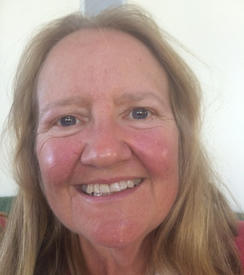Confused about heart rate, resistance training, and weight loss
Options

WendyLaubach
Posts: 518 Member
My doctor recently told me to do two things: (1) drop 20 lbs. (to start), and (2) do 45 minutes of some activity every day that keeps my heart rate between 110 and 130. I've reduced calories and dropped from 245 to 240 lbs. so far, so that part is going well, and I'm very hopeful I can keep on this track long, long past the initial 20 lbs. The 45 minutes of heart work is straightforward enough; I set the treadmill to a 15% incline, then vary my walking speed to hit the right heart rate, and vary the incline for interest. (Later, if the cardiologist clears me, I can aim at a higher heart rate.) I've been experimenting with resistance work, squats and wall push-offs and so on, as well as playing around with the weight machines.
Here's what confuses me. I gather I should be concentrating more on the resistance work, but I'm not sure how to push myself to the maximum and still be able to get in the 45 minutes of heart work every day. Does the required 48-96 hours of recovery for each muscle group mean resting from the treadmill, too? Maybe I should be waving light weights around with my arms on the treadmill?
Also, any help I can get with the appropriate approach to strengthening my rotator cuff groups without exacerbating on old injury would be appreciated. Is the idea to push just enough that it doesn't twinge too much in the old trouble spot? And then gradually increase the intensity as it appears not to be causing pain? Not just sore-muscle pain, I mean, but the characteristic ache and burn of the old injury.
Here's what confuses me. I gather I should be concentrating more on the resistance work, but I'm not sure how to push myself to the maximum and still be able to get in the 45 minutes of heart work every day. Does the required 48-96 hours of recovery for each muscle group mean resting from the treadmill, too? Maybe I should be waving light weights around with my arms on the treadmill?
Also, any help I can get with the appropriate approach to strengthening my rotator cuff groups without exacerbating on old injury would be appreciated. Is the idea to push just enough that it doesn't twinge too much in the old trouble spot? And then gradually increase the intensity as it appears not to be causing pain? Not just sore-muscle pain, I mean, but the characteristic ache and burn of the old injury.
0
Replies
-
Does the required 48-96 hours of recovery for each muscle group mean resting from the treadmill, too?
Not necessarily. If you are sore you can still walk on the treadmill for 45 minutes. It is actually great for you will get your blood flow up a bit and should reduce the soreness.
Rotator cuffs?
Google images shows millions of exercises for rotator cuffs follow these with low weights for the time being and then bring up the weights once you are more comfortable.
0 -
Sounds like you are doing great!!
I like to combine med weights with the squats or other lower impact cardio . This keeps the heart rate up but also resistance training . Make sure you take rest days to recover muscles and prevent injuries to joints . Keep up the great work0 -
Thanks! I've been doing the standard exercises recommended for rotator cuffs and am gradually losing my fear that I'm tearing anything up rather than strengthening. Slowly but surely I seem to be getting the full range of motion back (with pain going down not up!), so maybe the burning I was feeling was old adhesions, or whatever you call them. When I'm confident of my shoulders, I'll add some weights to the squats. So far so good for the hips and knees.
Wow, there are some inspiring exercises for the lower back, though some of them look like graduate-level! Baby steps for me. Got to strengthen the core and improve my posture. Some of them will get easier if I can get smaller--hey, maybe I'll be able to graduate from walking to jogging again eventually. My image is of a giant full swimming pool with a small drain at the bottom: a slow but steady process of draining all that fat away.
I'm delighted to find that what they say is true: after only a few days of smaller portions, your stomach shrinks up and you don't feel as hungry any more. I can still eat the food I like, within reason, but I just eat less of it. No filling up the plate, no seconds, and no thoughtless munching at odd hours. Keeping a food diary works for me, along with measuring some of my common foods the first time in order to get an idea of the appropriate serving size. Also, to my amazement, I look forward to the workout, and already feel much stronger and more limber. Who knew. I thought I would hate driving into town to the gym, and instead I'm sort of obsessed with not breaking my "string." Odd what motivates us. One fun thing: when I first walk downstairs in the morning, my feet and knees are noticeably less stiff. Another: when I walk upstairs, it's already easier, after only a few weeks. You really just have to get started, I guess.
For decades I've felt completely out of control. Not any more.0 -
WendyLaubach wrote: »Maybe I should be waving light weights around with my arms on the treadmill?
No, this can lead to injuries, and it doesn't strengthen much. It's best to follow a pro-designed strength program. A good program for your age group is New Rules of Lifting for Life. Or get a customized plan from a good personal trainer (caution: not all are good).
Since you have a prior injury, you probably should get clearance first from a medical professional to lift.
As a beginner, don't try to combine strength with cardio. Give 100% focus to mastering good form. 0
0 -
I would follow an established program for lifting and do cardiovascular (heart) work on your non-lifting days. You should get clearance from a medical professional given your injury...
you could also look into circuit training or something. traditional lifting isn't about the heart...cardiovascular work is for your heart (though you will have some benefits from lifting too...but you don't maintain a sustained, elevated HR)
0 -
See, what I'm struggling with is that my doctor's orders are 45 minutes of elevated heart rate (do I call that "cardio"?) every day, so it doesn't seem to work to alternate cardio days with lifting days.
I'll check out the "New Rules of Lifting for Life," thanks! I consulted a trainer in my little tiny town's gym the first day, but we couldn't seem to understand each other. She did show me some routines, though, and explained how to make them gradually more difficult until I could do real pushups, pullups, etc.
I'm getting less concerned about the old shoulder problem every day. Starting light on the cuff strengtheners seems to work. My flexibility has increased. The weird sensation I felt in some positions--not quite pain but more of a "wrongness"--is already fading. It seems like I can get away with strengthening that shoulder slowly and gingerly, without hurting it the way I did 10-15 years ago. It must have healed OK after all.0 -
One option is to tag on the cardio after strength training (not before). Make sure to eat an hour or 2 before you go the gym.
If that's too grueling, perhaps do the cardio at a different time of day. Not necessarily at the gym.. for example, Youtube workouts at home (Leslie Sansone, FitnessBlender, etc). You'll want to use a heart rate monitor that alerts you when you get over 130. 0
0 -
WendyLaubach wrote: »See, what I'm struggling with is that my doctor's orders are 45 minutes of elevated heart rate (do I call that "cardio"?) every day, so it doesn't seem to work to alternate cardio days with lifting days.
I'll check out the "New Rules of Lifting for Life," thanks! I consulted a trainer in my little tiny town's gym the first day, but we couldn't seem to understand each other. She did show me some routines, though, and explained how to make them gradually more difficult until I could do real pushups, pullups, etc.
I'm getting less concerned about the old shoulder problem every day. Starting light on the cuff strengtheners seems to work. My flexibility has increased. The weird sensation I felt in some positions--not quite pain but more of a "wrongness"--is already fading. It seems like I can get away with strengthening that shoulder slowly and gingerly, without hurting it the way I did 10-15 years ago. It must have healed OK after all.
walking is cardio...you could walk before or after you lift and do more intensive cardio on your non lifting days.
I usually ride on my lifting days too, but I have plenty of time between sessions as I ride in the AM and lift in the PM so I have a good amount of time to recover from one to the other.0 -
Walking may be cardio--we already walk 1.5 miles with the dog every morning--but I can't get my heart rate up to 110 walking on the flat road (no hills here), and my joints aren't up to jogging yet at this weight. The doc was very specific about this minimum requirement for 45 min. With some concentration, I can get the HR to 110 at home by shoveling and wheelbarrowing in the garden, but it's iffy and variable. The most reliable way to hit 110 at home is to go up and down the stairs, but I'm going to have to train my calf muscles better before I try that again! That's really why I joined the gym: to make the HR part a little more mindless and less hard on the calves. Also, I find it hugely easier to do a concentrated 45-minute cardio workout at the gym, where the phone can't ring, etc. I've been doing the strength training before the cardio, so I guess I'm good there, too. And I have a heart monitor.
Thanks, you guys, for your patient responses to my questions.0 -
Hey, that "New Rules of Lifting for Life" book is terrific. Much better than the 3-4 others I've read recently trying to get a handle on this stuff.0
This discussion has been closed.
Categories
- All Categories
- 1.4M Health, Wellness and Goals
- 396.5K Introduce Yourself
- 44.2K Getting Started
- 260.8K Health and Weight Loss
- 176.3K Food and Nutrition
- 47.6K Recipes
- 232.8K Fitness and Exercise
- 449 Sleep, Mindfulness and Overall Wellness
- 6.5K Goal: Maintaining Weight
- 8.7K Goal: Gaining Weight and Body Building
- 153.3K Motivation and Support
- 8.3K Challenges
- 1.3K Debate Club
- 96.5K Chit-Chat
- 2.6K Fun and Games
- 4.5K MyFitnessPal Information
- 16 News and Announcements
- 18 MyFitnessPal Academy
- 1.4K Feature Suggestions and Ideas
- 3K MyFitnessPal Tech Support Questions



